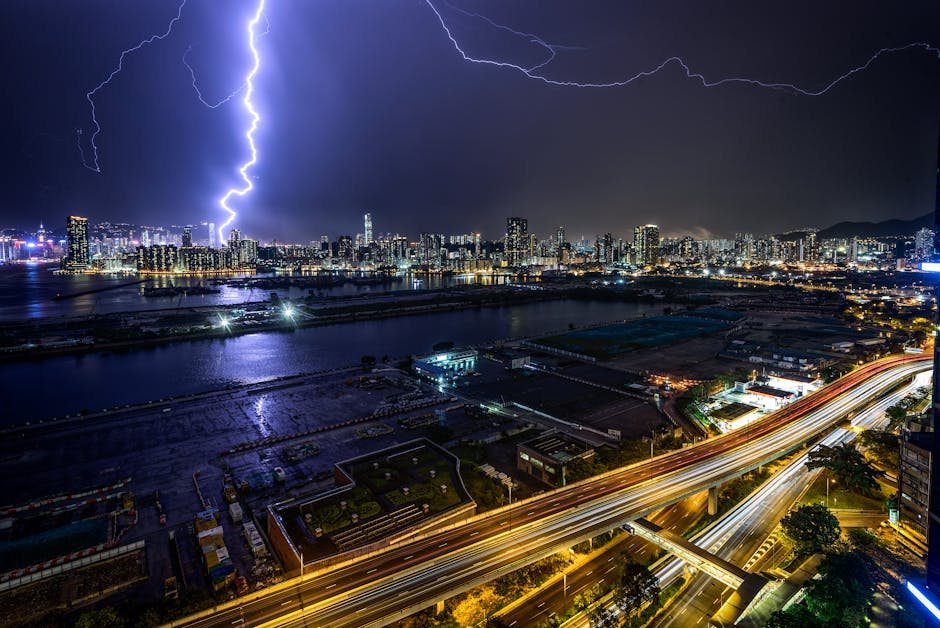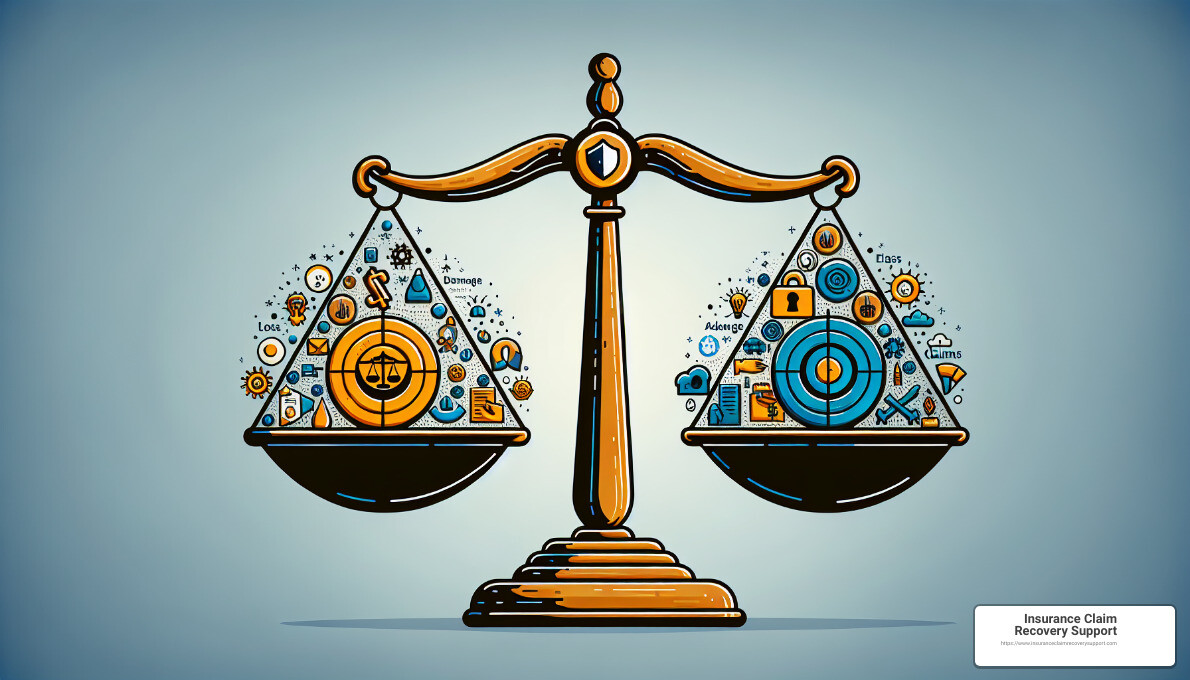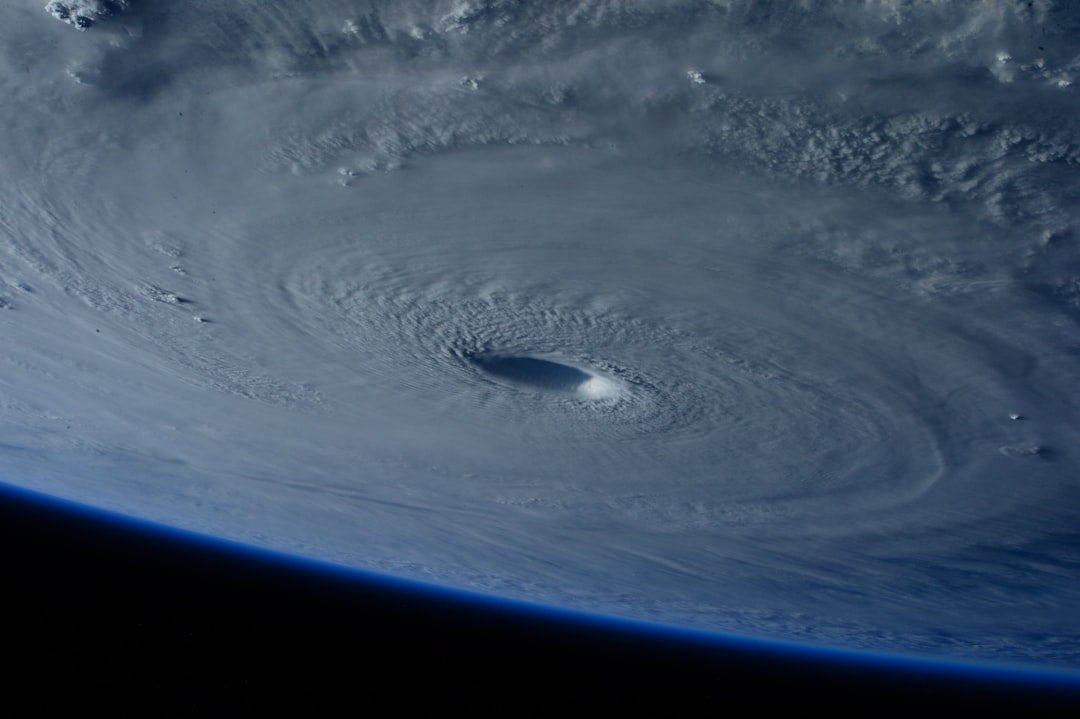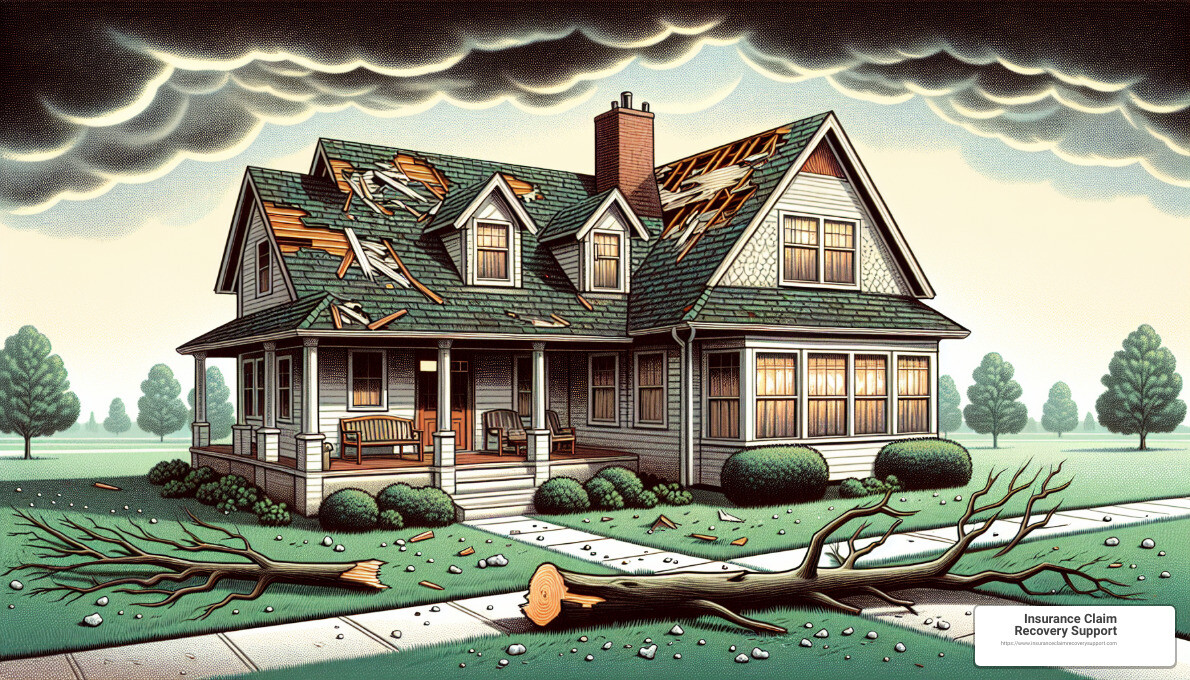Lightning damage to properties is both a common and unnerving event for property owners. Whether you manage a commercial building, invest in multifamily complexes, or oversee the operations of a religious organization, understanding insurance claims and policyholder rights related to lightning damage is essential.
Lightning can cause a wide range of damages, from physical to electrical systems. Quickly addressing these damages and filing a claim can be critical to resuming normal operations. Yet, navigating the insurance claim process is often frustrating and complex. That’s where the value of a public adjuster shines through.
Public adjusters play a key role in helping property owners navigate the complexities of insurance claims, ensuring that you receive a fair and prompt settlement. They advocate on your behalf, handling disputes, and leveraging expertise to maximize your claim’s value.
Below is a brief overview to give you a quick insight into the extent of lightning damage and its claim process.
- Types of Damage: Physical, Secondary Effect, EMP, Ground Reference Changes
- Costliest Damages: Fire, Structural, Electrical Systems, Appliances
- Common Disputes: Coverage Disputes, Pre-existing damage, Deductible issues
- Claim Process: Report, Document, Assess, File, Negotiate, Settle
- Public Adjuster Value: Expertise, Accuracy, Negotiation, Maximizing Settlement

By the end of this guide, property owners will feel more informed and empowered to tackle the insurance claim process for lightning damage, with a clear understanding of why having a public adjuster by your side is not just beneficial but often necessary.
Types of Lightning Damage
Lightning, with its immense power, can cause various types of damage to properties. Understanding these can help in accurately assessing the impact and preparing for insurance claims. Let’s break down the types of lightning damage:
Physical Damage
Physical damage is the most visible form of lightning damage. It can include:
– Burned or charred areas on buildings where the lightning directly struck.
– Broken windows or shattered tiles caused by the shockwave of the thunder.
– Split trees or other landscaping features.
Physical damage is a clear sign of a lightning strike and often the starting point for assessing further damage.
Secondary Effect Damage
This type of damage occurs indirectly from a lightning strike. Examples include:
– Fires started by the intense heat of a lightning strike.
– Water damage from firefighting efforts.
– Structural damage from a tree or another object that was hit by lightning and then fell onto a home or building.
Secondary effects can sometimes cause more destruction than the initial strike, making them crucial in claim assessments.
EMP Damage
Electromagnetic pulse (EMP) damage is less visible but can be equally devastating. It affects:
– Electronics and appliances, rendering them useless.
– Wiring systems within buildings, which can lead to further electrical issues.
The EMP from a lightning strike can surge through power lines and into homes, damaging anything plugged into an outlet.
Ground Reference Potential Change
This type of damage happens due to a difference in electrical potential caused by the lightning strike. It can result in:
– Electrical shocks to people or animals in the vicinity.
– Damage to underground pipes or foundational structures due to electrical surges.
Understanding these types of damage is the first step in addressing the aftermath of a lightning strike. Each type requires a specific approach for assessment and repair, which should be documented thoroughly when filing an insurance claim.
By recognizing the various impacts, policyholders can ensure they provide a comprehensive report to their insurance company, covering all bases for a fair settlement. For detailed insights on lightning and its effects, visit Wikipedia.
In the next sections, we’ll explore the costliest types of lightning damage to homes and buildings, common disputes in lightning damage insurance claims, the insurance claim process, and the invaluable role of a public adjuster in these scenarios.
Costliest Types of Lightning Damage to Homes and Buildings
When lightning strikes, the aftermath can range from minor inconveniences to major disasters. Understanding the types of damage that can hit your wallet the hardest is crucial. Here’s a breakdown of the costliest types of lightning damage.
Fire Damage
Fire damage tops the list as the most financially draining consequence of lightning strikes. The intense heat of a lightning bolt can ignite flammable materials within a home or building, leading to rapid fire spread. This type of damage not only requires extensive repairs but can also lead to total property loss.
Structural Damage
The sheer force of a lightning strike can cause significant structural damage. This includes shattered windows, compromised roofing, and cracked foundations. The cost of repairing or reinforcing these structural components can quickly escalate, especially if the damage is severe enough to necessitate rebuilding parts of the building.
Electrical System Damage
Lightning’s powerful electrical charge can wreak havoc on a home’s electrical system. From fried wiring to damaged electrical panels, the repair costs can be steep. Furthermore, the risk of subsequent electrical fires adds another layer of potential costs and dangers.
Appliance and Electronics Damage
Homes and buildings are filled with expensive electronics and appliances. A single lightning strike can surge through power lines and destroy these items, from refrigerators and washing machines to computers and televisions. Replacing these essentials can amount to a significant financial burden.
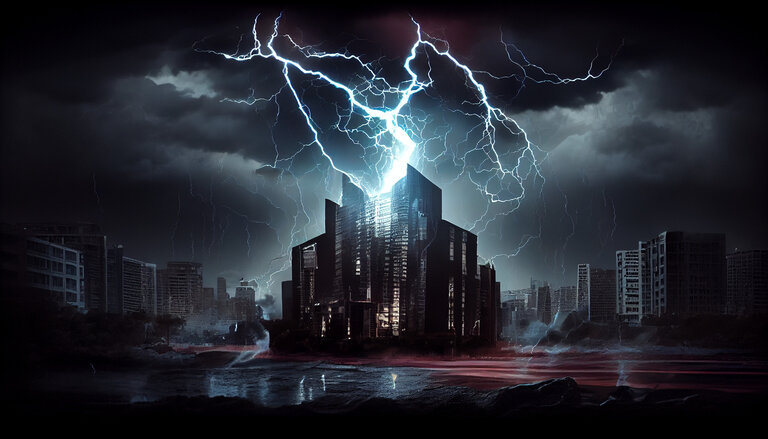
These categories of damage highlight the importance of having comprehensive insurance coverage that specifically addresses the risks associated with lightning. In the following sections, we’ll delve into common disputes that arise in lightning damage insurance claims and how they can be resolved, the step-by-step insurance claim process, and how a public adjuster can be a game-changer in ensuring you receive a fair settlement.
For more information on lightning and its impact, visit Wikipedia.
Common Lightning Damage Insurance Claim Disputes and Resolutions
Dealing with lightning damage can be overwhelming enough without the added stress of insurance claim disputes. However, knowing what disputes might arise and how to resolve them can make the process smoother. Here are some common issues policyholders face and strategies to address them.
Coverage Disputes
Sometimes, insurance companies may argue that your policy does not cover the type of lightning damage you’ve experienced. This can be particularly true with indirect damage from lightning, such as power surges.
Resolution Strategies:
– Review Your Policy: Carefully read your policy to understand what is covered. Look for terms like “lightning damage” or “surge protection.”
– Gather Evidence: Show how the lightning directly caused the damage. This might include reports from electricians or lightning strike reports from weather services.
Pre-existing Damage
Insurers may claim that the damage was pre-existing and not caused by the lightning strike.
Resolution Strategies:
– Provide Documentation: Having before-and-after photos of your property can prove invaluable. Regular home maintenance records can also support your claim that the damage was indeed caused by lightning.
Deductible Issues
High deductibles can sometimes mean that the cost of repair is not much more than the deductible, leading to disputes over whether a claim is worth filing.
Resolution Strategies:
– Calculate Costs Carefully: Get multiple estimates for repairs. If the cost significantly exceeds your deductible and the damage is covered, it’s worth proceeding with the claim.
Proof of Lightning Strike
Proving that lightning caused the damage is a common challenge. Insurers may require solid evidence that a lightning strike occurred and led to the specific damages claimed.
Resolution Strategies:
– Use Technology: Lightning tracking services and weather reports can confirm lightning activity in your area at the time of the damage. Electrician reports stating that the damage is consistent with a lightning strike are also helpful.
– Expert Opinion: A statement from a lightning damage expert or a public adjuster can lend credibility to your claim.
Resolution Strategies
When disputes arise, it’s crucial to remain calm and organized. Keep detailed records of all communications with your insurance company. If you find yourself at an impasse, consider the following:
– Mediation: Some insurance policies include mediation clauses for dispute resolution.
– Public Adjuster: Hiring a public adjuster can be beneficial. They understand the intricacies of insurance policies and can negotiate on your behalf to ensure a fair settlement.
Insurance Claim Recovery Support LLC specializes in helping policyholders navigate these disputes. With expertise in policy interpretation and damage assessment, they work to maximize settlement amounts and resolve claims efficiently.
Preparation and knowledge are key to successfully resolving lightning damage insurance claims. Stay informed about your policy, document everything, and don’t hesitate to seek professional help if needed.
For more insights on handling lightning damage and insurance claims, consider consulting with a professional at Insurance Claim Recovery Support LLC.
The Insurance Claim Process for Lightning Damage
Lightning damage to your home or building can be a shocking experience, both literally and figuratively. Understanding the insurance claim process is crucial in ensuring you get the compensation you’re entitled to. Let’s break down the steps:
Reporting the Damage
First things first, report the damage to your insurance company as soon as possible. Quick reporting is not just about getting the ball rolling; it’s often a requirement in your insurance policy.
Documentation
Take detailed photos and videos of all the damage. This step is vital. The more evidence you have, the stronger your claim. Make a comprehensive list of all damaged items and any repairs needed. In insurance claims, if it’s not documented, it didn’t happen.
Assessment
Your insurance company will send an adjuster to assess the lightning damage. This person’s job is to evaluate the extent and cause of the damage. It’s a good idea to be present during this assessment to ensure all damage is noted.
Filing the Claim
With your evidence in hand and an assessment done, it’s time to file your claim. Fill out all required forms accurately and provide all the documentation you’ve collected. Incorrect or incomplete information can delay your claim.
Negotiation
After your claim is filed, there might be a negotiation phase. This is where things can get tricky. Your insurance company may offer a settlement amount that doesn’t fully cover your damages. It’s crucial to know the value of your claim and stand firm.
Settlement
Finally, once there is an agreement on the compensation amount, you’ll reach the settlement phase. The insurance company will issue payment for the damages, allowing you to begin repairs and replacements.
The Value of a Public Adjuster in Lightning Damage Claims
Navigating the insurance claim process can be overwhelming, especially after experiencing the stress of lightning damage. This is where a public adjuster can be invaluable. Public adjusters are experts in policy interpretation, damage assessment, and negotiation with insurance companies. They work on your behalf to ensure that you receive the maximum settlement amount you’re entitled to.
Public adjusters like those at Insurance Claim Recovery Support LLC specialize in lightning damage claims and can take the burden off your shoulders. They understand the ins and outs of the insurance claim process and can help you avoid common pitfalls that could jeopardize your claim.
In Conclusion
Lightning damage can cause significant distress, but knowing the steps to take can ease the process. Documentation is your best friend, and seeking professional help can make a world of difference. For more insights on handling lightning damage and insurance claims, consider consulting with a professional at Insurance Claim Recovery Support LLC.
The Value of a Public Adjuster in Lightning Damage Claims
When lightning strikes, it can leave more than just physical damage in its wake. Navigating insurance claims can be a complex and daunting process. Here’s where the expertise of a Public Adjuster becomes invaluable.
Expertise in Policy Interpretation
Insurance policies are dense and complex documents filled with terms that can confuse anyone not versed in legal jargon. Public Adjusters are skilled in deciphering these documents. They understand the nuances of your policy, ensuring that you’re fully aware of your coverage. This knowledge is crucial when filing a claim for lightning damage, as it ensures that every aspect of your policy is utilized to your benefit.
Damage Assessment Accuracy
Assessing lightning damage accurately is critical. It’s not just about the visible damage; it’s also about understanding the potential for hidden issues, like electrical problems that may not surface until later. Public Adjusters bring precision to this process, using their experience to ensure that all damages, seen and unseen, are accounted for in your claim.
Negotiation with Insurance Companies
Dealing with insurance companies can be challenging. Public Adjusters speak the same language as insurance adjusters, putting them in an excellent position to negotiate on your behalf. They work tirelessly to ensure that your claim is treated fairly and that you receive the compensation you need to recover from lightning damage.
Maximizing Settlement Amounts
Perhaps the most significant advantage of hiring a Public Adjuster is their ability to maximize your settlement. Armed with an in-depth understanding of your policy and the damages incurred, they are adept at building a robust claim. Their negotiation skills are key in securing a settlement that fully covers the cost of repairs and replacements, minus the headache of back-and-forth discussions with your insurance company.
Insurance Claim Recovery Support LLC
At Insurance Claim Recovery Support LLC, we understand the stress and confusion that can accompany lightning damage and the subsequent claims process. Our team of experienced Public Adjusters is here to guide you every step of the way. From assessing the damage accurately to negotiating with insurance companies, we are committed to maximizing your settlement.
Lightning damage doesn’t just disrupt your property; it can disrupt your life. With Insurance Claim Recovery Support LLC, you have a partner dedicated to helping you navigate the complexities of insurance claims, allowing you to focus on what matters most – recovery and rebuilding.
The aftermath of lightning damage can cause significant distress, but knowing the steps to take can ease the process. Documentation is your best friend, and seeking professional help can make a world of difference. For more insights on handling lightning damage and insurance claims, consider consulting with a professional at Insurance Claim Recovery Support LLC.
Frequently Asked Questions about Lightning Damage and Insurance Claims
What evidence is required to prove lightning damage?
To successfully file a claim for lightning damage, you need to provide clear evidence. Here are the most common types:
- Char Marks: These are often found on electrical outlets, appliances, or the point of entry or exit of the lightning strike.
- Holes: Lightning can puncture holes in your roof or walls.
- Electrical System Diagnostics: A professional assessment can reveal if your electrical systems have been damaged by a surge, indicating a lightning strike.
Documentation is key. Photographs, professional reports, and diagnostics can all serve as crucial evidence for your claim.
How can I prevent lightning damage to my home?
Prevention is better than cure, especially when it comes to lightning. Consider implementing these measures:
- Lightning Rods: These direct the electrical charge away from your home, reducing the risk of damage.
- Surge Protectors: These devices protect your electronics from sudden spikes in voltage.
- Grounding Systems: A well-designed grounding system can prevent electrical surges throughout your home.
Are lightning damage claims typically covered by homeowners insurance?
Yes, most homeowners insurance policies cover lightning damage, but there are important details to be aware of:
- Standard Coverage: Typically includes damage to the structure of your home and personal property.
- Exclusions: Some policies may not cover damage to trees, landscaping, or separate structures. Be sure to read your policy carefully.
- Policy Limits: Your policy will have limits on how much it will pay out. High-value items may need additional coverage.
Understanding your policy’s specifics is crucial. If you’re unsure, reaching out to your insurance provider or a public adjuster can provide clarity.
Lightning damage can be sudden and severe, impacting not just the physical structure of your home but also your peace of mind. By knowing what evidence is needed, how to prevent future damage, and understanding the coverage your insurance provides, you can navigate the aftermath of a lightning strike with confidence. For further assistance or if you encounter disputes with your insurance claim, consider the expertise of a public adjuster from Insurance Claim Recovery Support LLC. Their knowledge can be invaluable in ensuring you receive the compensation you deserve.
Conclusion
Lightning damage can be both devastating and complex, impacting the very structure and safety of our homes and buildings. In the unfortunate event that you experience such damage, understanding your rights and the insurance claim process is crucial. The journey from documenting the damage to negotiating the settlement is fraught with potential challenges and disputes. It’s here that the value of a public adjuster becomes undeniably clear.
Insurance Claim Recovery Support LLC stands ready to assist you through every step of this process. Our expertise in policy interpretation, damage assessment accuracy, and negotiation with insurance companies positions us uniquely to support your needs. We aim to ensure that your settlement amount is maximized, reflecting the true extent of the lightning damage incurred.
We understand the stress and confusion that can accompany lightning damage and insurance claims. Our goal is to alleviate that burden, providing clear guidance and robust support. From the initial assessment to the final settlement, our team is dedicated to advocating on your behalf.
In conclusion, lightning damage presents a complex challenge, one that requires a knowledgeable and strategic approach to navigate successfully. With Insurance Claim Recovery Support LLC by your side, you can approach this challenge with confidence, knowing that you have an expert team working to secure the best possible outcome for you. Let us help protect your property and ensure that you receive the compensation you rightfully deserve. For more details on how we can assist you, please visit our service page.
When lightning strikes, you’re not alone. We’re here to light the way to recovery.

